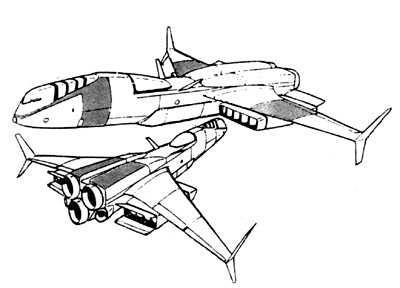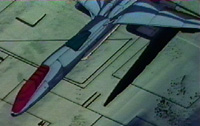

Designation:C-37 Albatross Heavy Tactical Military Transport |

|
||||

|
|||||


WARNING: DRAFT Material!



The skin of the Albatross is composed of treated steel plate. The skin stops all small arms fire, provides fair protection against heavier infantry weapons, such as a 12.7mm machinegun round, and poor resistance to light mecha-mounted weaponry, such as the Zentraedi 22.3mm HE autocannon round. The Albatross provides full protection from nuclear, biological, and chemical hazards, using an overpressure cockpit environment activated by radiation and hazardous chemical sensors, or manually when biological warfare conditions are anticipated. The internal consumables supplies can provide atmosphere for two days maximum.
The Albatross was designed to be able to transport entire units rapidly to far away locations. This aircraft built upon research for the aerospace plane and high speed civil transport conducted in the 1980s and 90s. The leaders of the Armies of the Southern Cross were concerned about being able to efficiently disperse their limited troops, yet be able to field sufficient firepower to put down any Zentraedi uprisings anywhere in the world. The designers decided that using protoculture cell and fusion reactor technology could drastically reduce the weight of fuel needed for a transport. This allowed for an incredible carrying capacity for this aircraft. This massive aircraft can be used for airborne insertions of an entire squadron of ground-based mecha into hostile landing zones. Due to its size and poor maneuverability, the Albatross relies on its massive engines to provide sufficient speed to escape any threat.
Due to its high speed and poor maneuverability, no tanker, gunship or electronic warfare version of this transport were ever developed. At least one Albatross was adopted by the Tactical Space Corps and had its wings reinforced and hardpoints added for use in launching booster-equipped satellites and shuttles. Another experimental idea employed by the Tactical Air Force involved loading the cargo bay full of solid-metal "bombs" and dropping them at high speed. This attack proved frighteningly effective, but left the Albatross horribly exposed to counterattack.
Return to Southern Cross auxiliary aircraft index.
Go to Robotech Reference Guide Home Page.
Robotech (R) is the property of Harmony Gold. This document is in no way intended to infringe upon their rights.
Content by Robert Morgenstern, with Pieter Thomassen and Peter Walker